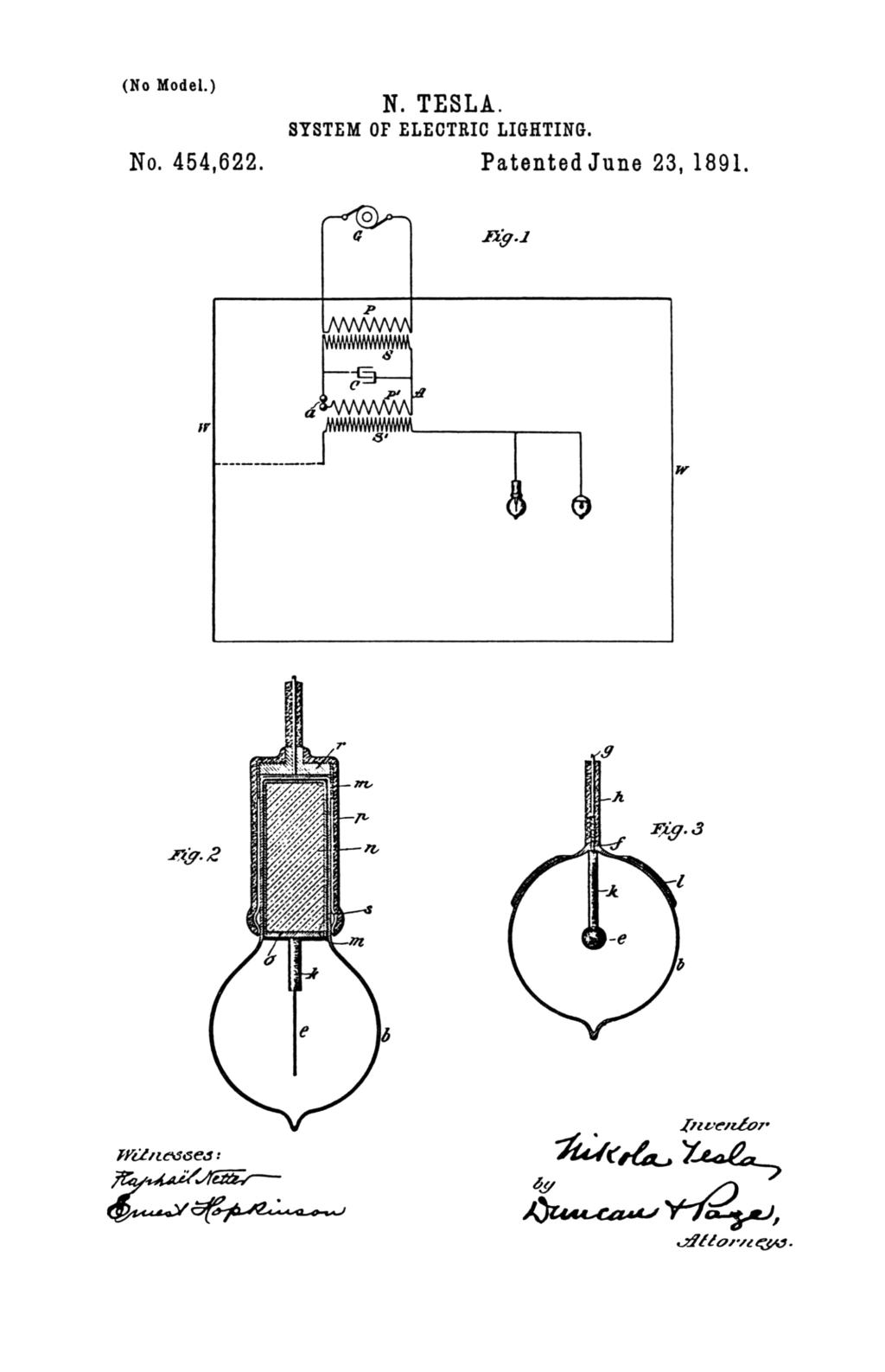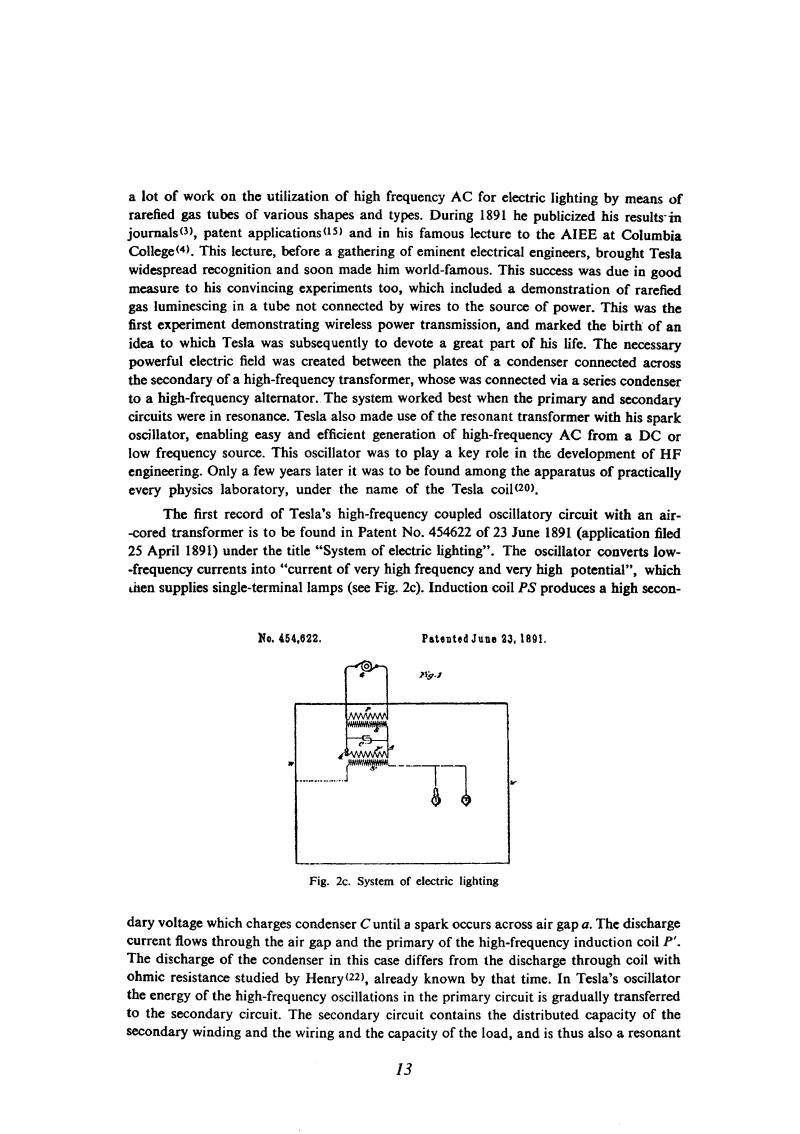
Nikola Tesla Books
a lot of work on the utilization of high frequency AC for electric lighting by means of rarefied gas tubes of various shapes and types. During 1891 he publicized his results in journals(3), patent applications(15) and in his famous lecture to the AIEE at Columbia College(4). This lecture, before a gathering of eminent electrical engineers, brought Tesla widespread recognition and soon made him world-famous. This success was due in good measure to his convincing experiments too, which included a demonstration of rarefied gas luminescing in a tube not connected by wires to the source of power. This was the first experiment demonstrating wireless power transmission, and marked the birth of an idea to which Tesla was subsequently to devote a great part of his life. The necessary powerful electric field was created between the plates of a condenser connected across the secondary of a high-frequency transformer, whose was connected via a series condenser to a high-frequency alternator. The system worked best when the primary and secondary circuits were in resonance. Tesla also made use of the resonant transformer with his spark oscillator, enabling easy and efficient generation of high-frequency AC from a DC or low frequency source. This oscillator was to play a key role in the development of HF engineering. Only a few years later it was to be found among the apparatus of practically every physics laboratory, under the name of the Tesla coil(20).
The first record of Tesla's high-frequency coupled oscillatory circuit with an air-cored transformer is to be found in Patent No. 454622 of 23 June 1891 (application filed 25 April 1891) under the title âSystem of electric lightingâ. The oscillator converts low-frequency currents into âcurrent of very high frequency and very high potentialâ, which then supplies single-terminal lamps (see Fig. 2c). Induction coil PS produces a high secondary voltage which charges condenser C until a spark occurs across air gap a. The discharge current flows through the air gap and the primary of the high-frequency induction coil P'.
The discharge of the condenser in this case differs from the discharge through coil with ohmic resistance studied by Henry(22), already known by that time. In Tesla's oscillator the energy of the high-frequency oscillations in the primary circuit is gradually transferred to the secondary circuit. The secondary circuit contains the distributed capacity of the secondary winding and the wiring and the capacity of the load, and is thus also a resonant
13
Tesla: âPhenomena of alternating currents of very high frequencyâ, The El. World, Febr. 21, 1891, A-3.
âElectric discharge in vacuum tubesâ, The El. Engineer, July 1, 1891, A-16.
Tesla: âExperiments with alternate currents of very high frequency and their application to methods of artificial illuminationâ, a lecture delivered before the AIEE, May 20, 1891, L-15.
Tesla: âSystem of electric lightingâ, U.S. Patent 454 622, June 23, 1891, Appl. Apr. 25, 1891, P-208.
âElectric incandescent lampâ, U.S. Patent 455 069, June 30, 1891, Appl. May 14, 1891, P-213.
TRIBUTE TO NIKOLA TESLA, Nikola Tesla Museum, Belgrade, 1961 (from now on: Tribute), Fleming A. P. M âNikola Teslaâ, Jour. of Instit. of Electr. Eng., London, vol. 91, February 1944, A-215.
Fleming: p. 22.


